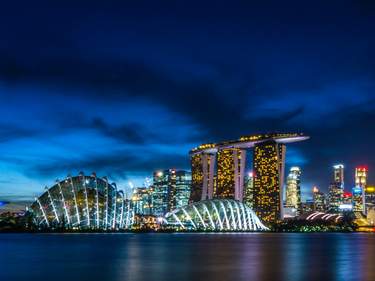4. Hit the dancefloor in the many clubs of Singapore
Singapore’s clubbing scene is small but seriously happening, with space-age decor and regular visits by world-famous DJs. Clubbing, or going to nightclubs, is a popular activity in Singapore, and the city has a vibrant nightlife scene with a range of clubs and bars to choose from.
Many of the clubs in Singapore are located in the central business district or in the Orchard Road area, and they generally stay open until the early hours of the morning. There are clubs that cater to a variety of musical tastes, including electronic dance music (EDM), hip hop, and pop. Some popular clubs in Singapore include Zouk, which is known for its electronic music, and Attica, which is known for its hip hop and R&B music.
There are also a number of rooftop bars and clubs in Singapore, which offer panoramic views of the city skyline and a more laid-back atmosphere. It's worth noting that Singapore has strict laws regarding the sale and consumption of alcohol, and it is illegal to drink in public places.




































